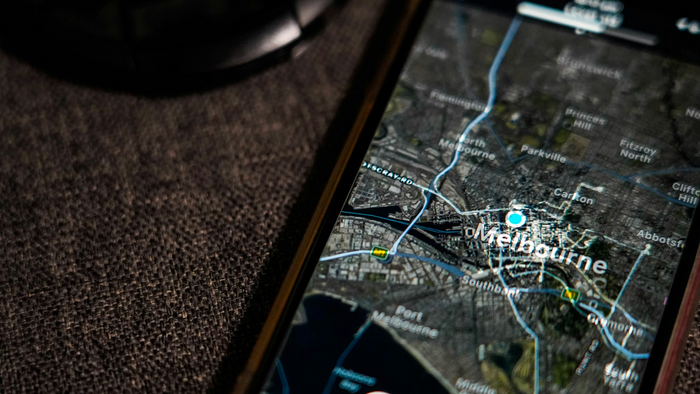AI Travel Agent: Could it Destroy the OTA Business Model?

What happened?
Tripadvisor has partnered with OpenAI and Perplexity, allowing travelers to explore destinations, read reviews, and check availability—all through a single chatbot interface.
When you pair an LLM with these capabilities, you get an AI travel agent. A growing number of such assistants are emerging across the industry, each offering features for planning, booking, and managing trips. Here are just some of them.
Expedia’s Trip Matching feature lets users send an Instagram Reel via DM to Expedia and receive an AI-generated itinerary tailored to that destination, with booking links embedded. This feature is currently being beta‑tested and aims to turn visual inspiration into macro booking-ready itineraries.
Hotels.com (part of Expedia Group) offers an AI chatbot agent that supports conversational travel planning, shows real-time pricing, guest reviews, imagery, and facilitates end‑to‑end booking from a single chat window.
Kayak offers a chat-based “Kayak AI” agent that combines conversational AI with proprietary search tools for flights and hotels.
Trip.com has an AI assistant that can create itineraries. It also provides an option to automatically rebook flights and adjust itineraries during disruptions.
MakeMyTrip, India's largest OTA, announced the launch of a multilingual trip planning assistant Myra that guides users from discovery to booking within the same conversational interface.
How do AI travel agents work?
An AI travel agent is a system that can autonomously plan and execute complex tasks toward a goal, using large language models (LLMs) and external tools or APIs. Unlike traditional AI (which typically generates answers on request), agentic AI sets objectives and performs multi-step actions.
With such capabilities, AI travel agents can understand trip preferences, call booking APIs to check availability, reason about the best options, and present the final results. Instead of visiting multiple platforms, travelers can interact with one chatbot interface.
Their key capability is function calling. An LLM itself only “knows” language, while the agent extends it with external tools, such as weather APIs, hotel inventory systems, maps, and vector databases.
An AI travel agent works in the planning and action loops, iterating multiple times until the final goal is met.
For example, a request can be broken down into tasks: If booking a multi-city trip, the agent queries airline APIs and presents ticket options; if planning a ski trip in one of the cities, the agent needs to call another function to fetch weather forecasts.
Read our article on agentic AI for a deep dive into the topic, and the AI travel agents article to learn about AltexSoft’s hands-on experience in the field.
So, AI travel agents are here. But do people find them useful?
Yes, many travelers are already relying on AI for trip planning.
At least 78 percent of travelers found GenAI results to be somewhat or very helpful for both planning and in-destination use.
According to Booking.com research, 67 percent have already used AI in some aspect of travel, and of those, nearly all have turned to it for planning or booking (98 percent) or while already on a trip (96 percent).
Last year, 51 percent of Americans stated they had already used some AI tool for travel planning. Another survey reported that 84 percent of leisure travelers were satisfied or very satisfied with AI-generated itinerary recommendations.
These numbers show that AI travel agents are not just a novelty—they are becoming an integral part of how travelers plan and experience their trips.
Okay, travelers seem to like AI. Do they trust it more than human agents?
No, human specialists are still more trustworthy.
A recent MMGY survey shows that although 42 percent of leisure travelers use AI agents for trip planning, human recommendations are considered “twice as trustworthy.”
The US Bureau of Labor Statistics even expects travel agent employment to grow at 3 percent through 2033, projecting 8,200 job openings each year.
In short, the data suggests travelers still value human insight—and so do the job forecasts.
Will AI travel agents kill off OTAs as we know them?
Well, the threat is there.
Since AI agents can search and compare travel options, there's a speculation that OTAs might be pushed aside.
On one hand, the shift we're seeing is OTAs rolling out their own AI agents or partnering with tech companies instead. In addition, most AI travel agents just hand the user over to the OTA platform to complete the booking.
OTAs can also be seen as more reliable, as many of them have spent years building user trust, integrating inventory, polishing UIs, and developing global marketing channels. Travelers know what to expect—cancellation terms, loyalty points, dispute processes.
Another perspective is that OTAs might act as intermediaries that gather travelers' preferences and share them with suppliers. Natural language conversations that allow for fuzzy requests, such as "I want to swim with sharks this summer," may be a valuable source of market demand data compared to the current booking data. In this case, suppliers gain visibility into travelers' needs, while OTAs bring value by facilitating the right connections.
On the other hand, what stops travel suppliers from bypassing OTAs and going directly to agentic AI providers? Airlines, hotels, or car rentals can use Model Context Protocol (MCP), a communication layer between LLMs and external systems.
Suppliers can set up their own MCP servers, making their inventories directly accessible to AI agents. This approach doesn’t require custom integration for each connection, making the implementation relatively straightforward.
If an AI agent provider offers lower commissions, it will make this provider an appealing partner for travel suppliers.
Ultimately, the future can be a blend of the two scenarios, with OTAs evolving to incorporate AI agents and some AI platforms emerging as powerful new competitors.